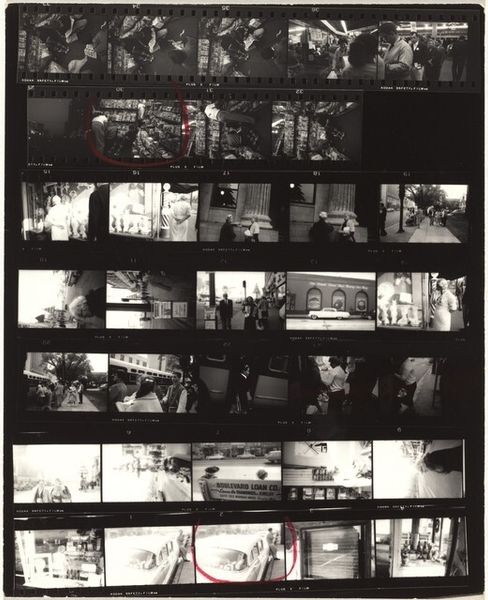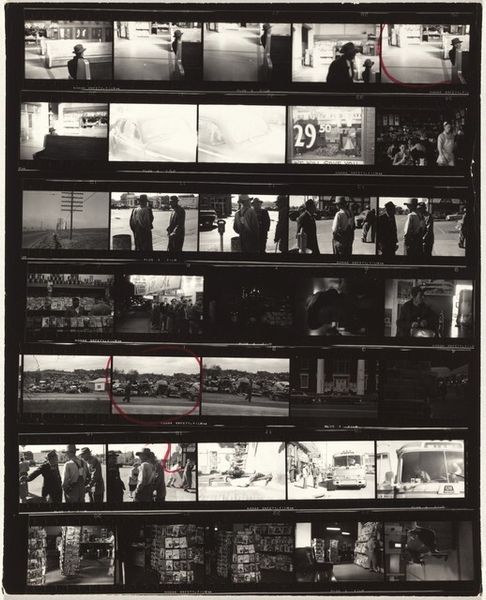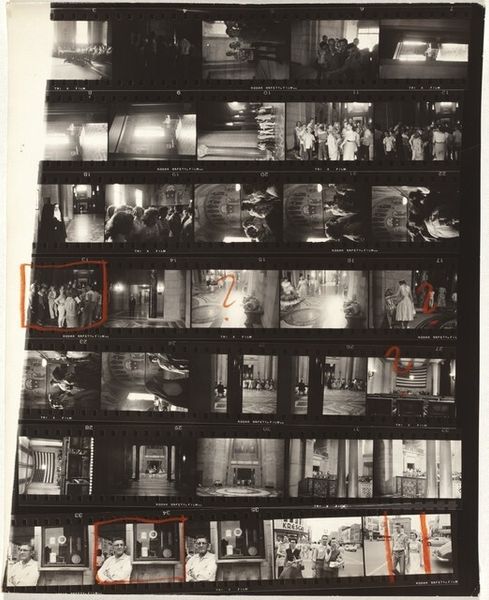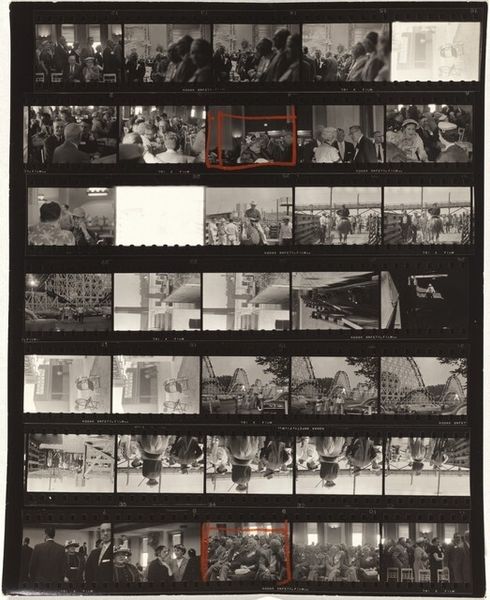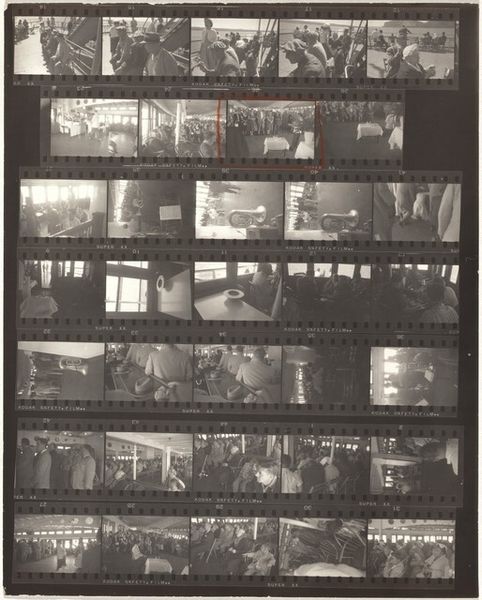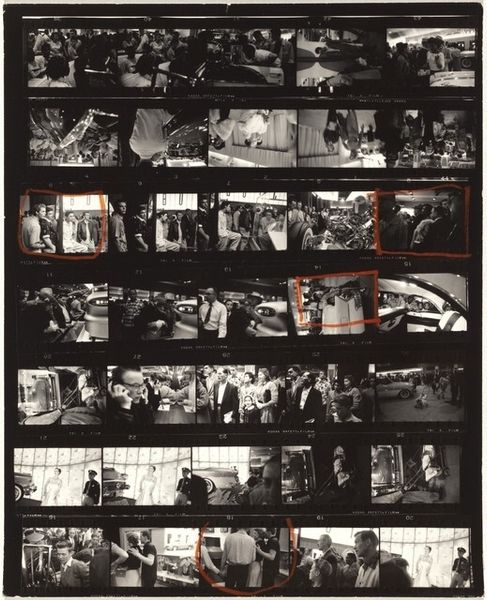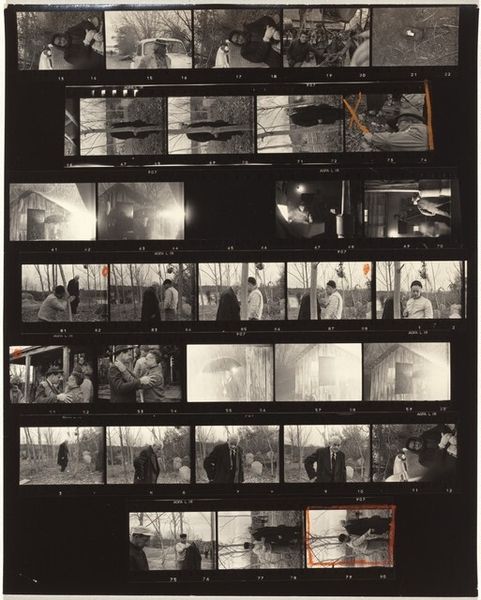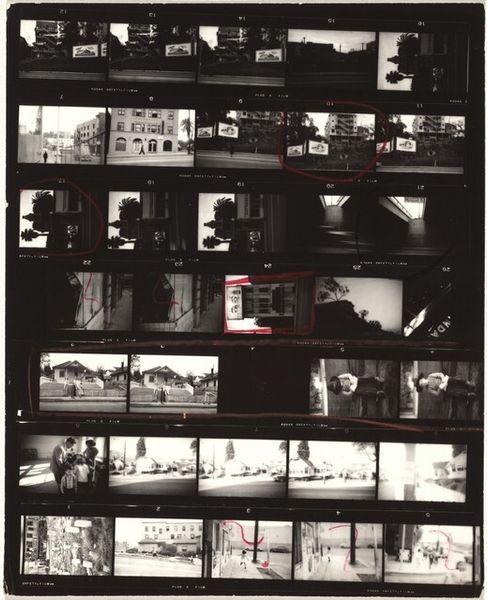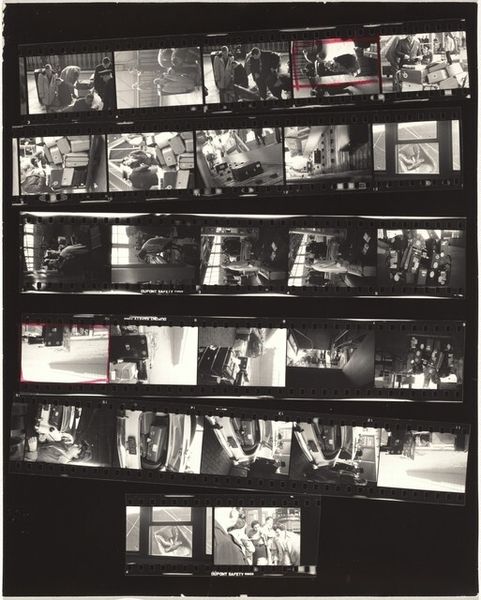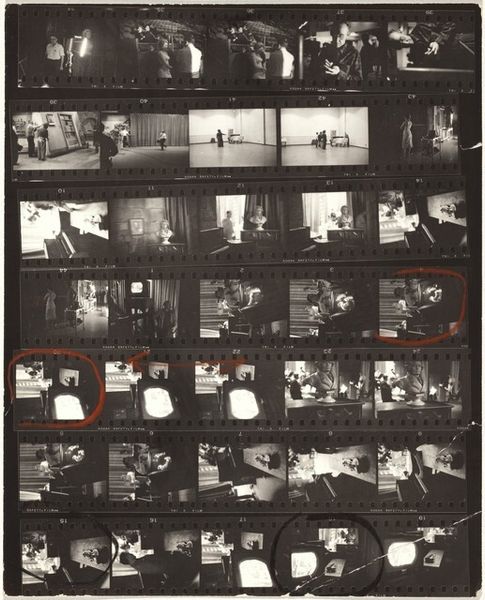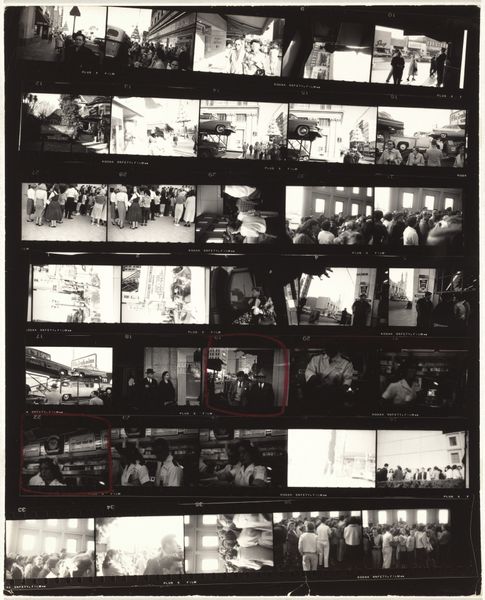
#
dark object
#
film photography
#
wedding photograph
#
3d printed part
#
wedding photography
#
ceremony
#
dark hue
#
dark monochromatic
#
film
#
celebration photography
Dimensions: overall: 25.4 x 20.5 cm (10 x 8 1/16 in.)
Copyright: National Gallery of Art: CC0 1.0
Curator: What strikes me immediately about Robert Frank’s "Guggenheim 428—Los Angeles," created between 1955 and 1956, is its granular texture. The entire film strip pulsates with high contrast. Editor: And what strikes me is its fragmentation. It is a social study, or rather the anticipation of one, divided in boxes like one giant questionnaire. The whole aesthetic is like the beginning of data collection. Curator: Indeed. The format itself emphasizes seriality and a kind of grid. The individual images appear as frames or cells within a larger structure. Observe how Frank harnesses the full tonal range within each frame; it moves from stark whites to deep blacks to establish strong focal points. Editor: Placing it within the context of its time, we have to understand it in light of the emerging dominance of sociological surveys. These were not just neutral instruments. They shaped social discourse and policy in very profound ways. In this piece, the museum visitor is recorded and accounted for as raw material, if you will, for civic policy making. Curator: One could argue that Frank, in embracing a snapshot aesthetic and the raw, unfiltered look of the film strip itself, critiques the very notion of a singular, objective viewpoint. Editor: Absolutely, but this perspective gains even more purchase when understood against postwar America's ambitions for social management and control. The seemingly disparate images cohere into a wider narrative of civic planning that has not just social but distinctly political dimensions. How would our appreciation be further augmented were we to see this photographic array situated alongside ephemera from period election campaigns? Curator: It is this interplay between aesthetic form and sociopolitical context, then, that provides a fuller and deeper appreciation. We start from the formal arrangement of Frank’s black and white photography and can consider a wider historical sphere. Editor: Exactly, the piece, in its photographic state, seems like an intimate and emotional time capsule now. It feels deeply relevant to the present.
Comments
No comments
Be the first to comment and join the conversation on the ultimate creative platform.
